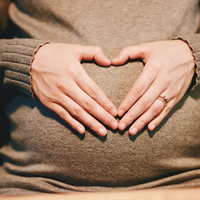Many people think that as a self-employed person, you won’t get any financial assistance when you are pregnant and spending time at home looking after your new child.
However, there is a social security benefit called Maternity Allowance that you may be entitled to.
Please note that this does not apply to limited companies, it is just for the self-employed sole trader or partners – for limited companies you need to read about Statutory Maternity Pay which is applicable to employees.
If you are both employed and self-employed you can only claim Maternity Allowance if you are not claiming Statutory Maternity Pay from an employer.
Maternity Allowance is paid for up to 39 weeks. The most you can receive each week is £145.18 (based on 18-19 rates).
As this income is paid as a tax free benefit, it’s not taxable income, however bear in mind it may affect how much you can receive for other benefits such as (Housing Benefit and Income Support).
In order to qualify for the maximum £5,662 (39 weeks @ £145.18) you need to be able to answer “yes” to all of the following questions:
- In the 66 weeks before your baby’s due, were you self-employed for at least 26 of those weeks? (they don’t have to be consecutive weeks.)
- For 13 of those weeks, did you pay Class 2 National Insurance contributions (even if voluntary)? (again, these weeks don’t have to be consecutive.)
- For 13 of the last 66 weeks, was your income from self-employment at least £161.31 per week?
If you can answer “yes” to 1 and 2, but not to 3, your Maternity Allowance will be limited to 90% of your average weekly earnings.
This is where keeping detailed bookkeeping records will pay off. You get to decide which 13 weeks your average weekly earnings are based on. The weeks don’t have to be consecutive – so pick the best 13.
If you said “yes” to the first question, and are due to pay Class 2 NIC’s but haven’t actually made your payments yet, you will only get £27 a week for 39 weeks.
In some cases, HMRC will invite you to make early payment of Class 2 NIC’s so that you get the higher Maternity Allowance – something definitely worth considering – however bear in mind that Class 2 NIC’s are now paid through your personal tax return so if you make any advance payments of Class 2 NIC you will need to adjust for this on your tax return further down the line.
How to make a claim
In order to make your claim, you need to complete a form MA1.
You can submit your MA1 at the start of the 14th week before the week your baby is due.
You can either stop work then and start claiming Maternity Allowance, or you can continue working for longer if you choose, right up to the date your baby is born and only start your Maternity Allowance from then.
The important point to remember is that you can’t continue to work (even for yourself) once you start claiming your Maternity Allowance. The exception to this is 10 days throughout the period of your maternity leave that count as “Keeping in Touch” (KIT) days.
Don’t be tempted to think that this means that you can do an hour or two a day, as long as you don’t exceed a total of 70 hours (10 x 7 hour days). The rule is that even working for an hour uses up one day of your allowance.
Finally, there’s no requirement to stop working for the full 39 weeks. Unfortunately, though, once you go back to working, your Maternity Allowance payments stop.

